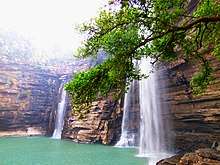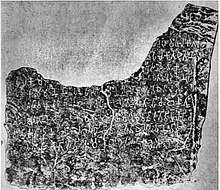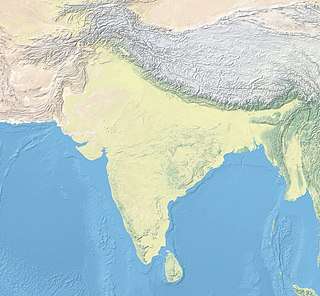Ahraura
| Ahraura | |
|---|---|
| Town | |
 Ahraura Location in Uttar Pradesh, India  Ahraura Ahraura (Uttar Pradesh) | |
| Coordinates: 25°01′N 83°01′E / 25.02°N 83.02°ECoordinates: 25°01′N 83°01′E / 25.02°N 83.02°E | |
| Country |
|
| State | Uttar Pradesh |
| District | Mirzapur |
| Named for | Scenic beauty |
| Government | |
| • Body | Chairman-Gulab Maurya |
| • District Magistrate (DM) | (IAS) |
| Area | |
| • Total | 25 km2 (10 sq mi) |
| Elevation | 87 m (285 ft) |
| Population (2001) | |
| • Total | 23,142 |
| • Density | 930/km2 (2,400/sq mi) |
| Languages | |
| • Official | Hindi |
| Time zone | UTC+5:30 (IST) |
| PIN | 231301 |
| Telephone code | 05443 |
| Vehicle registration | UP 63 |
Ahraura is a town and a municipal board chairman Gulab Maurya in Mirzapur district (distance 60 kilometers by road) in the Indian state of Uttar Pradesh. Ahraura has an scope of being a major tourist attraction (40 minutes drive away from Varanasi) specially during rainy season, as it is surrounded by forest, picturesque hills, many waterfalls, such as Lakhaniya Dari (Dari stands for Waterfall in Hindi), and water reservoirs creating a scenic beauty, and a nearby site of stone carvings/writings/paintings in Caves believed to be prehistoric.
Geography
It has an average elevation of 87 metres (285 feet).[1]
Demographics
As of 2001 India census,[2] Ahraura had a population of 23,142. Males constitute 52% of the population and females 48%. Ahraura has an average literacy rate of 52%, lower than the national average of 59.5%; with 63% of the males and 37% of females literate. 18% of the population is under 6 years of age.
Tourism
Ahraura have many tourism places such as likhaniya dari, chuna dari, Bhandari devi temple and several ashrams.
Education
The city has two Co- educational Intermediate Colleges named Nagar Palika Inter College and Jai Hind Vidyamandir Inter College, one exclusively for girls, Ganga Devi Balika Inter College, and a Post Graduate college named Vanasthali Mahavidyalaya, affiliated to MGKVP, Varanasi, there is also some private schools namely Kumudini Devi Academy, Model School and Naveen Shiksha Niketan.
Crops
Wheat, rice, sugar cane, and mango are the main crops.
Culture and religions
The main religions of Ahraura Constituency are Hindu and Muslims.
Festivals

All major Festivals Like Holi, Deepawali, Eid, Dussehra etc. are celebrated with full zeal and joy. In Months of July, August and September there are many cultural and fun fair are organized at different places in Ahraura.
Economics
Ahraura has been an historical center of trade in the region, Lately for Forest Products such as, Wooden Toys, Khair (Kattha, used in Beetle/Paan), Tendu-Patta (used in preparing smoke-cigars/beedee), Tree-raisins/Lava pan vandar, and earlier for Food Grains and Vegetables. The nearby forests yield many a valued medicinal herbs, with a few rare to find anywhere else.
The city is very famous for the pink stones of its mountain rocks. Geographically the Stones found are considered in varieties Chunar's Sand Stones, But are different in attributes such as Stronger in Hardness, the unique quality of the stone is that it shines Pink when touched with water,as in rain, a Rare Pink Marble, recently used in huge quantity in the Monumental Parks erected by Mayawati Government, in the cities of Lucknow and NOIDA.
Banks
Ahraura has modern banking facilities with ATM's. All the major banks like Allahabad Bank, State Bank Of India, Bank of Baroda, Punjab National Bank and Grameen Bank have their branches in Ahraura.
Notable locations

Ahraura has many famous holy places: there is a temple situated in rocky mountain and there is stone inscription of Emperor Ashoka, one of the Minor Rock Edicts of Ashoka. An important monument accounts for stone-scripture by Emperor Ashoka, in a script possibly Pali, a mark of Buddhist Influence, which in that period, might have been a site of distribution of food by the monastery, thus contributing the name Bhandari. Near the Southern End of the city, near the Water Reservoir, is a Stone Pillar, that too is believed to be erected by Emperor Ashoka, with a script/note in Pali, mistaken as a riddle to be solved to reach the hidden wealth of Sumedha (mentioned in "Chandrakanta" written by Devaki Nandan Khatri, also successfully produced as TV Serial By Nirja Guleri).
The city has many famous structures/temples within its boundaries, the two most visited are Durga Devi temple and Bhandari Devi temple. Durga Devi temple is situated at a mountain at the south edge of the city and Bhandari Devi temple is situated at a mountain at the north edge of the city. The city also has a temple named as Radha Krishna temple in the mid of the city market. There are many architectural structures, scattered in the periphery of the town speaking of its rich history and culture.
References
- ↑ Falling Rain Genomics, Inc - Ahraura
- ↑ "Census of India 2001: Data from the 2001 Census, including cities, villages and towns (Provisional)". Census Commission of India. Archived from the original on 2004-06-16. Retrieved 2008-11-01.
